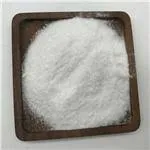Chemicals Used in the Purification of Water
Water is essential for life, yet ensuring its purity has become a major challenge due to pollution and the increasing demand for clean water. Water purification involves various processes that remove contaminants, making water safe for consumption and other uses. One of the crucial aspects of this process is the use of chemicals, which play a vital role in enhancing the efficiency of purification methods. This article explores the primary chemicals used in water purification, their functions, and the benefits they offer in ensuring water quality.
1. Coagulants
Coagulation is often the first step in the water treatment process. Coagulants, such as aluminum sulfate (alum) and ferric chloride, are added to water to promote the aggregation of suspended particles, allowing them to form larger clusters, or flocs. This process is essential for removing sediment, organic matter, and other impurities. The flocs can then be easily removed through sedimentation or filtration. Coagulation is particularly effective in treating turbid water, helping to improve its clarity and quality.
2. Flocculants
Following coagulation, flocculants are often introduced to enhance floc formation and settling. Polymers, such as polyacrylamide, are commonly used as flocculants. These chemicals aid in binding smaller particles together, ensuring that a more substantial mass of impurities can be removed from the water. The use of flocculants not only accelerates the sedimentation process but also reduces the amount of coagulant needed, making the process more cost-effective and environmentally friendly.
Disinfection is critical to water purification, as it removes or inactivates harmful microorganisms, including bacteria, viruses, and protozoa. Common disinfectants include chlorine, chloramine, ozone, and UV radiation. Chlorine is the most widely used disinfectant due to its effectiveness and low cost. It not only kills bacteria but also provides residual protection in the distribution system. However, it can react with organic materials, forming harmful byproducts such as trihalomethanes (THMs). To minimize these risks, many facilities opt for chloramine, a combination of chlorine and ammonia, for longer-lasting disinfection without the harmful byproducts.
chemical used in purification of water

Ozone and UV radiation are alternative disinfectants that do not leave residues. Ozone is a powerful oxidizing agent that can effectively kill microorganisms and remove organic contaminants, though its use requires careful handling due to its reactive nature. UV radiation, on the other hand, exposes water to ultraviolet light, effectively inactivating microorganisms without the use of chemicals. This method is gaining popularity due to its efficiency and safety.
4. pH Adjusters
The pH level of water significantly impacts its quality and the effectiveness of treatment processes. Chemicals such as sulfuric acid, sodium hydroxide, and calcium carbonate are commonly used to adjust the pH of water. Acidic or alkaline water can corrode pipes, reduce disinfectant efficacy, or lead to the leaching of harmful metals. By maintaining an optimal pH level (generally around 7), water treatment facilities can enhance the safety and palatability of drinking water.
5. Flavouring Agents and Stabilizers
To improve the taste of purified water, flavouring agents and stabilizers are sometimes added. These chemicals help mask any remaining unpleasant tastes or odors, ensuring that the water is not only safe but also enjoyable to drink. Additionally, stabilizers, such as phosphates, can help prevent scale formation in pipes, thereby extending the lifespan of the distribution system.
Conclusion
The role of chemicals in water purification is multifaceted and crucial for ensuring safe drinking water. From coagulants that remove particulate matter to disinfectants that kill harmful microorganisms, each chemical plays a specific role in the overall purification process. As water quality regulations become stricter and the demand for clean water grows, the continuous development and optimization of these chemicals will be essential for efficient water treatment. Governments and organizations must commit to adopting effective water purification practices that prioritize human health and environmental sustainability, thus ensuring access to clean water for all.

